After a morning of photographing polar bears from a distance, we had been warned by the tour guide not to be surprised if a polar bear approached the buggy. I had imagined a polite, inquisitive bear that would come close enough for us to capture with our cameras then go on its way. This polar bear was anything but that. It came at us in long strides and thumped against the side of our vehicle with its paws before standing up on its hind legs and looking me straight in the eye. Even though I was safe high in a tundra vehicle, I felt pinned to the ground under its gaze, frozen, while the growls of the polar bear, the whistling of the Arctic wind and the clicking cameras of the other photographers melded into a symphony. That close-up encounter is the first thing that pops into my mind whenever anyone mentions ‘polar bear’ or ‘Churchill’.
Coming eye-to-eye with a polar bear in the wild is an experience that should be at the top of your Manitoba wildlife watching list but there are many other opportunities to see and interact with wildlife across the province. In summer, Hudson Bay teems with thousands of beluga whales and offers close encounters with curious belugas swimming up to boats. Besides polar bears and belugas, Manitoba’s two national parks and 92 provincial parks are home to bison, black bears, wolves, foxes, caribou, moose, hundreds of bird species and Canadian beavers. Here’s a guide of what and where to see wildlife in Manitoba.
Contents
Wildlife In Manitoba
1- Polar Bears
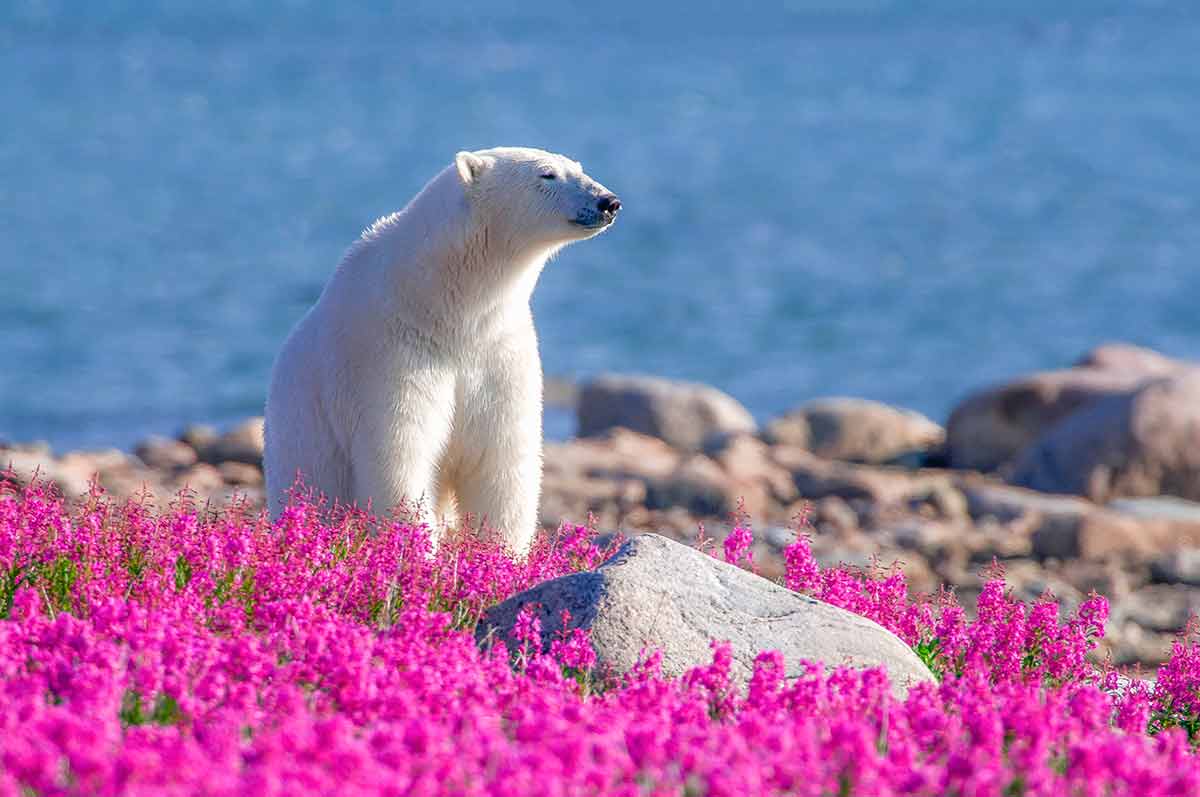
Around a thousand polar bears migrate to Churchill from July to November and stay around on shore while they wait for Hudson Bay to freeze in November.
The region has one of the world’s largest polar bear denning areas. Autumn is the time to go on a polar bear safari, as the bears are not actively hunting and are easy to spot, as they conserve the fat reserves they built up through winter while waiting to hunt on the ice.
Churchill is well set up for polar bear watching, with hotel accommodation, restaurants and a few other attractions around town.
How to see polar bears
Churchill Tundra Vehicle Tour
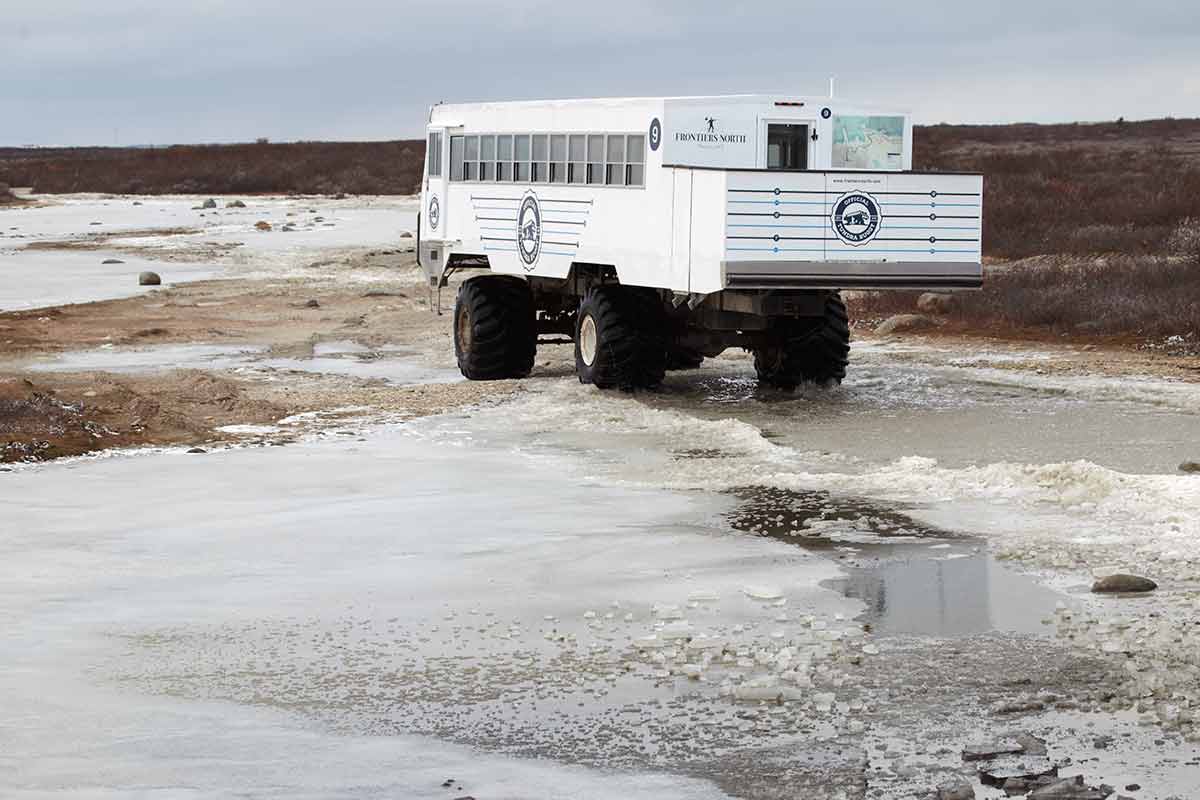
The most popular way to see polar bears is to stay in Churchill and book a seat on a tundra vehicle safari to explore the Churchill Wildlife Management Area. These tundra vehicles are large safari-style vehicles that resemble a bus on tractor wheels built to travel over rough terrain.
Vehicles are high off the ground for safety and equipped with toilet facilities, windows and outdoor viewing decks. They offer expedition-style guided tours with educational information about the polar bears and the region. The bears are unfazed by the vehicles and some curious individuals will come right up to take a closer look. Here are three options:
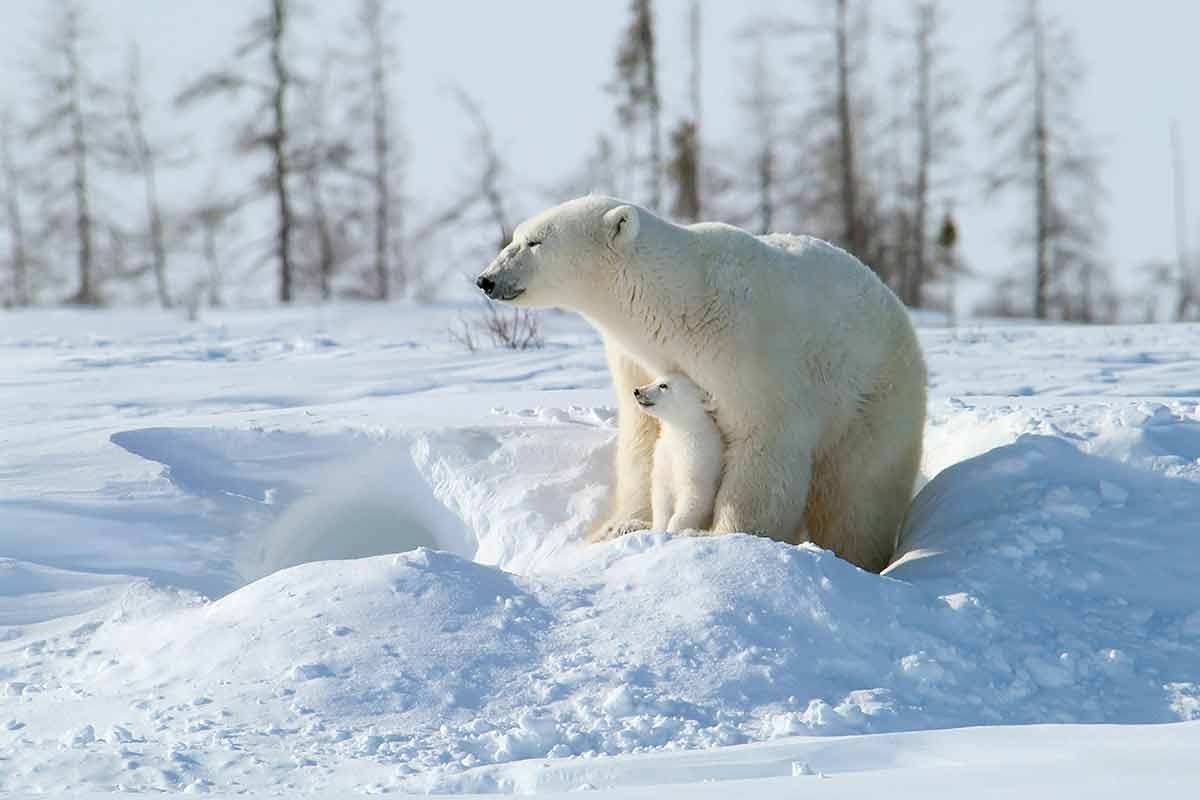
Frontiers North Adventures Tundra Buggy® Safari – 30 years ago, Frontiers North created the first Tundra Buggy, enabling travellers to see polar bears up close.
Lazy Bear Expeditions’ Arctic Crawler – These Arctic Crawler™ tundra vehicles contain all the modern amenities including USB ports.
Great White Bear Polar Rovers – Polar Rovers have corrugated steel mesh flooring built into the viewing platforms so you can see the polar bears when they walk beneath the platform.
Stay In A Wilderness Lodge
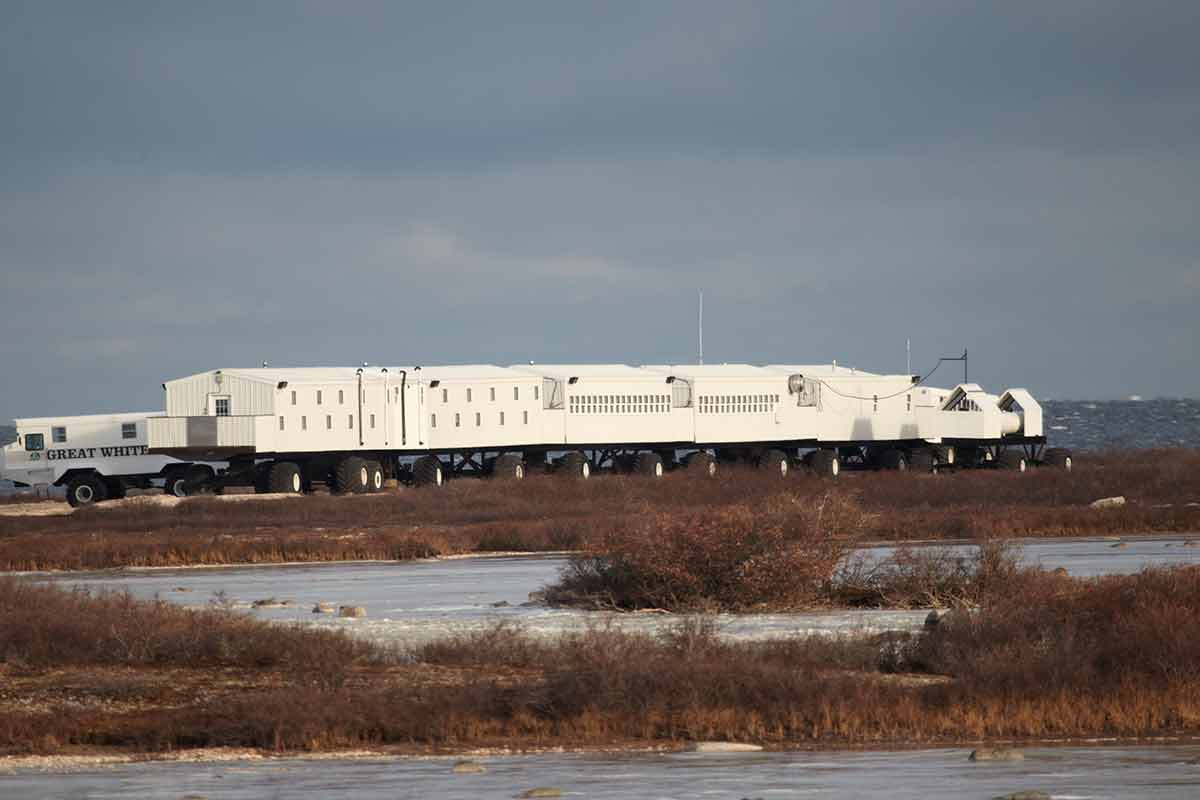
Sleep with polar bears by staying in a wilderness lodge or a pop-up lodge away from the town. Wilderness lodges are fenced for safety, while pop-up tundra lodges are like train carriages on tractor wheels high above the ground.
The benefit of a lodge stay is you’re right there in polar bear country and the bears often come to you. Staying in a wilderness lodge is usually part of a multi-day tour and includes meals and activities such as guided tours in a buggy, star gazing and educational sessions. Here are some lodges:
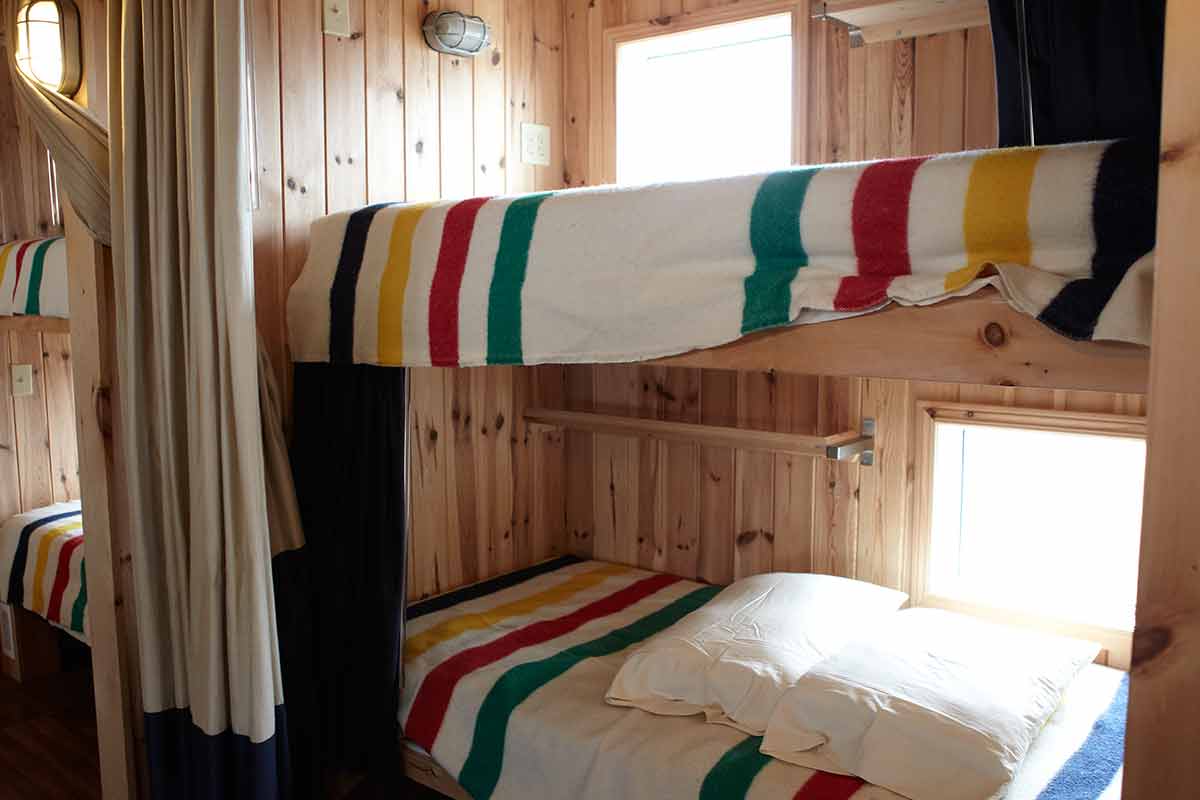
Tundra Buggy® Lodge – This pop-up hotel in the Churchill Wildlife Management Area is a series of connected carriages high above the ground. It’s open in October and November, right in the heart of polar bear country. It has two accommodation units that sleep 20 people each unit in bunk-style berths. Each berth has a twin-sized coil mattress, reading light, four 110-volt electrical outlets and sound-dampening curtains. Units have three bathrooms, two showers, a lounge, dining hall, staff quarters and elevated outdoor viewing platforms for outdoor photography.
Great White Bear Lodge – In the Churchill Wildlife Management Area, this pop-up lodge sits on a spit of land that juts out onto Hudson Bay. The lodge’s 32 rooms are laid out like cabins on a train, with either an upper or lower berth. There are six shared toilets, four showers, a lounge area, a dining car, and outdoor viewing platforms.
Seal River Heritage Lodge – The lodge is on the shore of Hudson Bay, 65 km north of Churchill, accessible only by floatplane or helicopter. Guests can go on guided wildlife hikes across the tundra each day to see polar bears from a distance while on foot.
Nanuk Polar Bear Lodge – This five-star remote wilderness ecolodge has eight rooms on Hudson Bay and is in a wilderness location with a stunning backdrop of Boreal Forest.
Dymond Lake Lodge – This eight-room lodge has an authentic wilderness feel, with opportunities to spot other wildlife besides polar bears, such as moose, fox, pine marten, snowy owls, and wolverine. Seal River, Nanuk and Dymond are operated by Churchill Wild.
Seal River Heritage Lodge, Nanuk Polar Bear Lodge and Dymond Lake Lodge are owned by Churchill Wild and the only way to visit these lodges is by joining one of the company’s all-inclusive tours.
Best time to see polar bears: July to November, as the polar bears are forced onto shore as the ice melts in summer.
‘Journey to Churchill’ at the Assiniboine Park Zoo
The ‘Journey to Churchill’ at the Assiniboine Park Zoo has an impressive polar bear exhibit with pools, landscaping that mimics their natural environment, and underwater viewing tunnels where you can look up and see polar bears swimming above you through a glass tunnel. But, even if you are able to experience polar bears in the wild, it’s worth spending some time at the Winnipeg Zoo.
2- Belugas
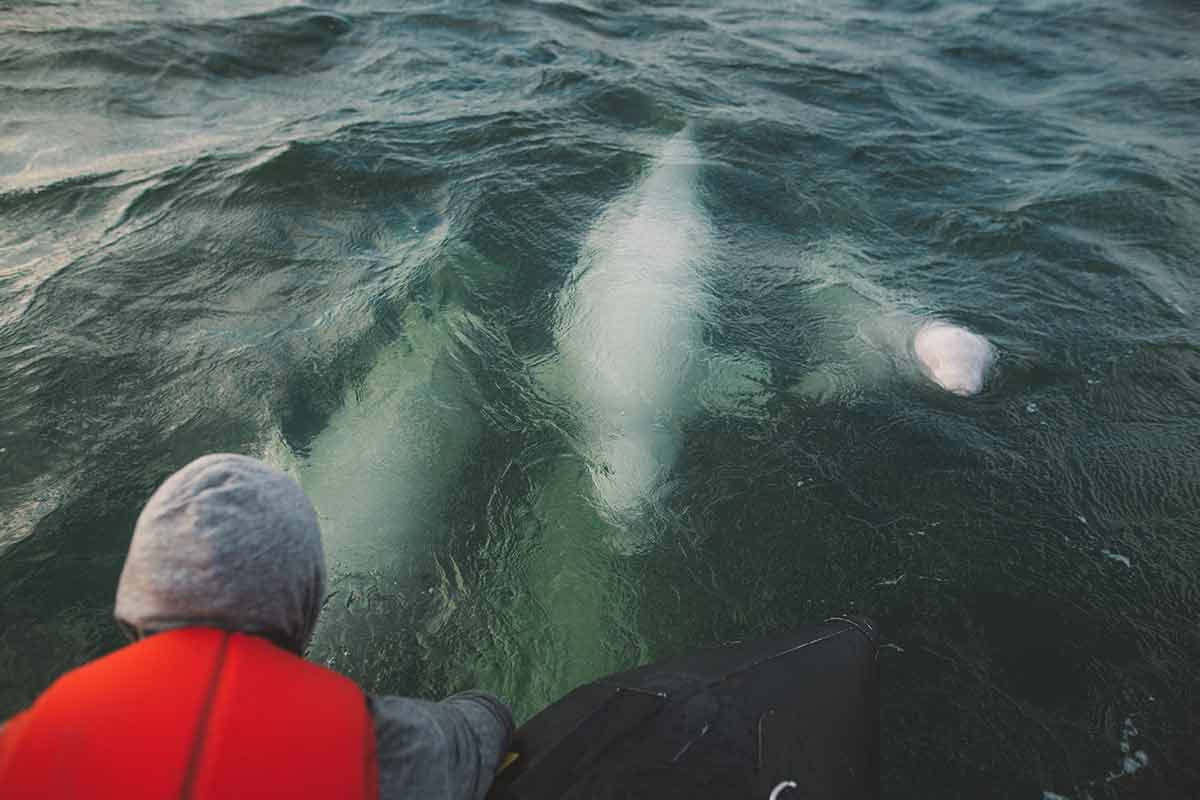
Thousands of migrating beluga whales arrive in the western Hudson Bay region each summer, breeding in spring before migrating to the Churchill region. Pods of hundreds of beluga whales appear in early July around the bay and northern river estuaries to give birth and to feed on capelin and other fish in summer. They swim into the Churchill River and other northern rivers, like Seal River, because they are attracted by the warmer waters.
Belugas have a long gestation period of 14 months and calving is usually in August, so they stay around until autumn when they migrate to the Arctic Ocean.
Beluga whales are a unique white whale with a bulbous forehead and the only type of whale with vertebrae that are not fused, enabling them to turn their necks to look at passing boats. They can swim backwards and are vocal whales that make sounds by changing the shape of their melon-like forehead when they blow air around their sinuses.
Over 57,000 beluga whales enter western Hudson Bay each year and around 4000 end up in the Churchill River Estuary, where you can experience close encounters with an unusual kind of whale.
How to see beluga whales
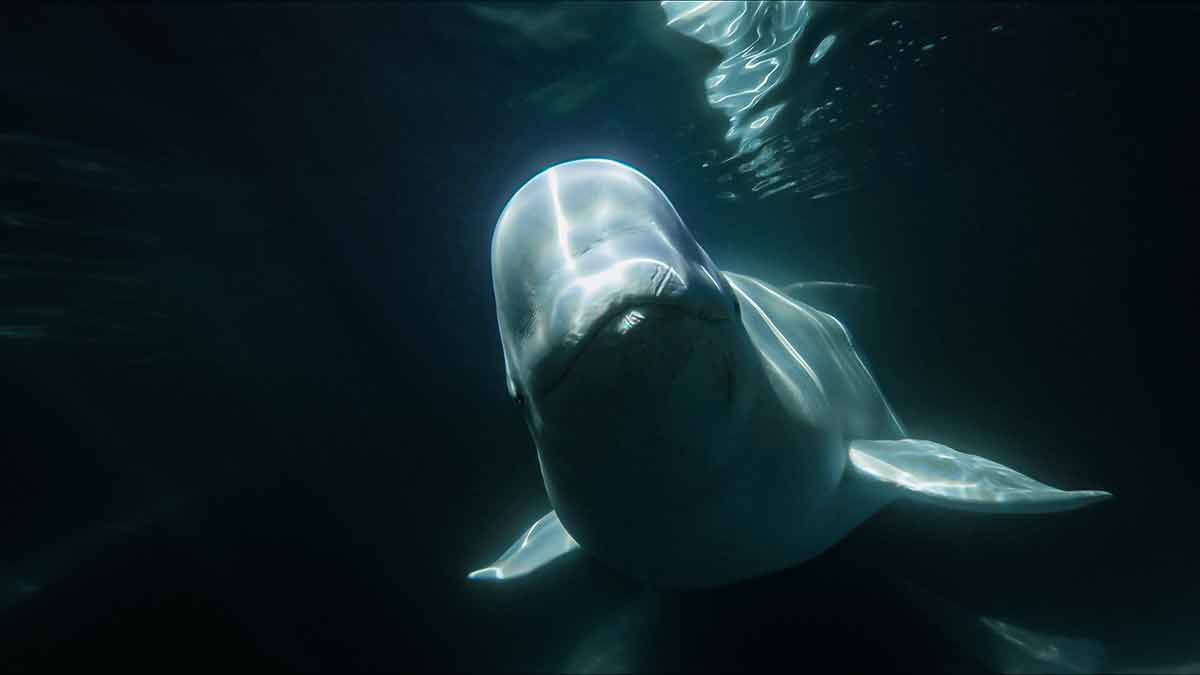
Beluga whale tours range from two hours to multi-day trips that include staying at a lodge, a polar bear-spotting land tour and time on the water with the belugas that could include:
- AquaGliding – Gliding on the water while lying face down on a floating mat wearing a mask and snorkel pulled along by a Zodiac is a thrilling way to get really close to curious beluga whales.
- Kayaking – This is another great way to paddle alongside beluga whales and is suitable for beginners.
- Stand-up paddleboarding
- Zodiac tours – Belugas are attracted to the bubbles from the Zodiac motor and often swim close to the Zodiacs, turning on their side to watch people.
Best time to see belugas: Summer
3- Bison
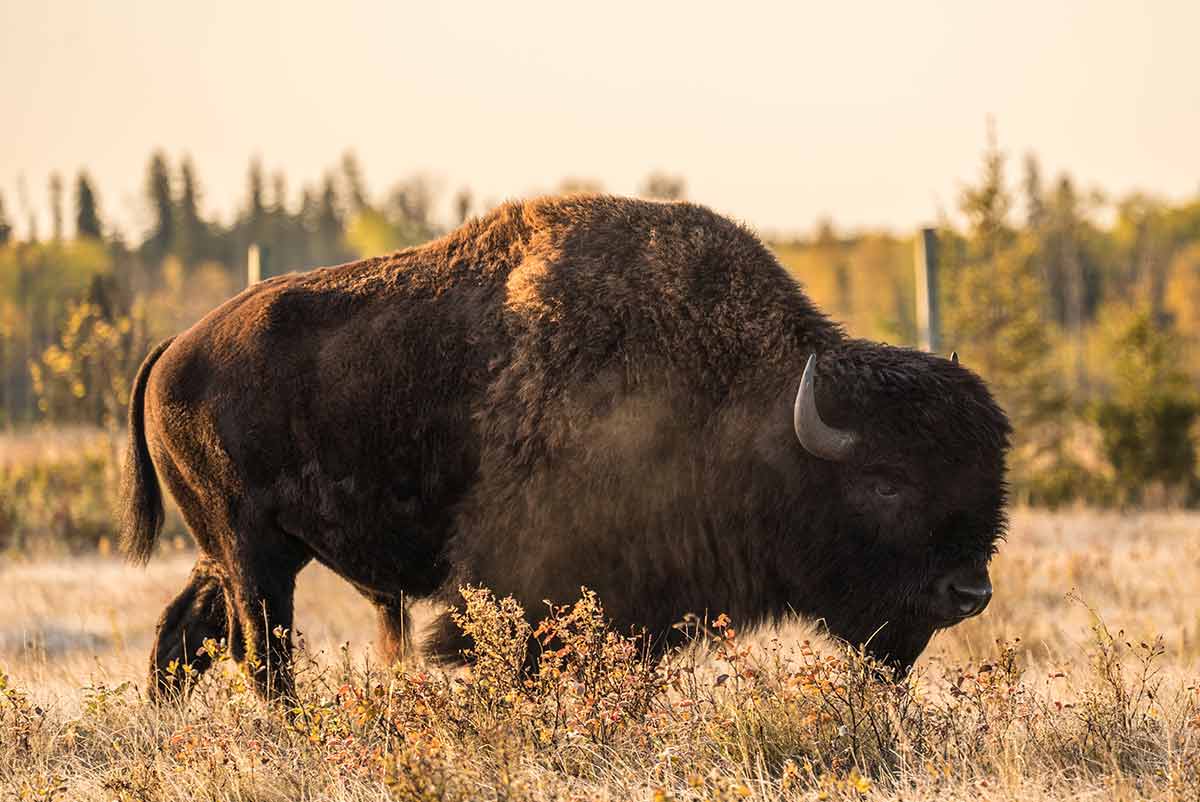
The bison is Canada’s largest mammal and is featured on the shield on the Manitoba Coat of Arms, the province’s flag, and at the Manitoba Legislative Building entrance. This is because the bison played a significant role in Manitoba’s history.
Millions of bison once roamed North America, sustaining the First Nations people providing food, clothing, fuel, utensils and the fur trade.
There are two types of bison in Manitoba. The plains bison (Bison bison bison) have shaggy capes and massive heads, and wood bison (Bison bison athabascae), with shoulder humps and triangular heads.
Bison weigh around 725 kg (2000 pounds) and can run fast, up to 55km per hour leaping up to two metres in the air and live up to 20 years.
How to see bison
- Riding Mountain National Park has a herd of 40 plains bison within a 500-hectare enclosure introduced to the park in the 1940s as a conservation measure. You can self-drive around the Lake Audy Bison Enclosure or join a multi-day wildlife safari that includes visiting Churchill.
- FortWhyte Alive offers one-hour bison safaris by minibus and baby bison walks during calving season.
Best time to see bison: July to mid-September is rutting season when bulls challenge each other in their mating rituals by headbutting, shoving and locking horns. Calves are born in May and June.
4- Red-Sided Garter Snakes
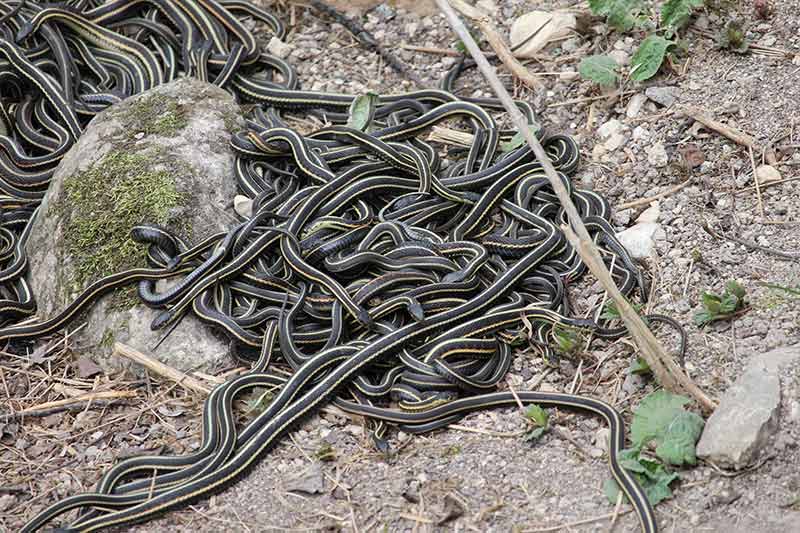
The bedrock around the town of Narcisse is the province’s snake capital because tens of thousands of red-garter snakes live in naturally forming crevasses and caverns beneath the ground. The limestone provides a safe place for the snakes to hibernate in winter while they crawl out of their dens to mate in spring.
The red-sided garter snake (Thamnophis sirtalis parietalis) is either dark green or black, with a yellow stripe along the top and sides and some snakes have a row of orange or red bars.
How to see red-sided garter snakes
Take a self-guided trail at Narcisse Snake Dens (off Highway 17, north of Narcisse), a provincial wildlife management area writhing with red-sided garter snakes.
Best time to visit: Spring (May) during mating season and Fall (September) when the snakes return to their dens and are best viewed on a sunny day.
5- Great Grey Owl
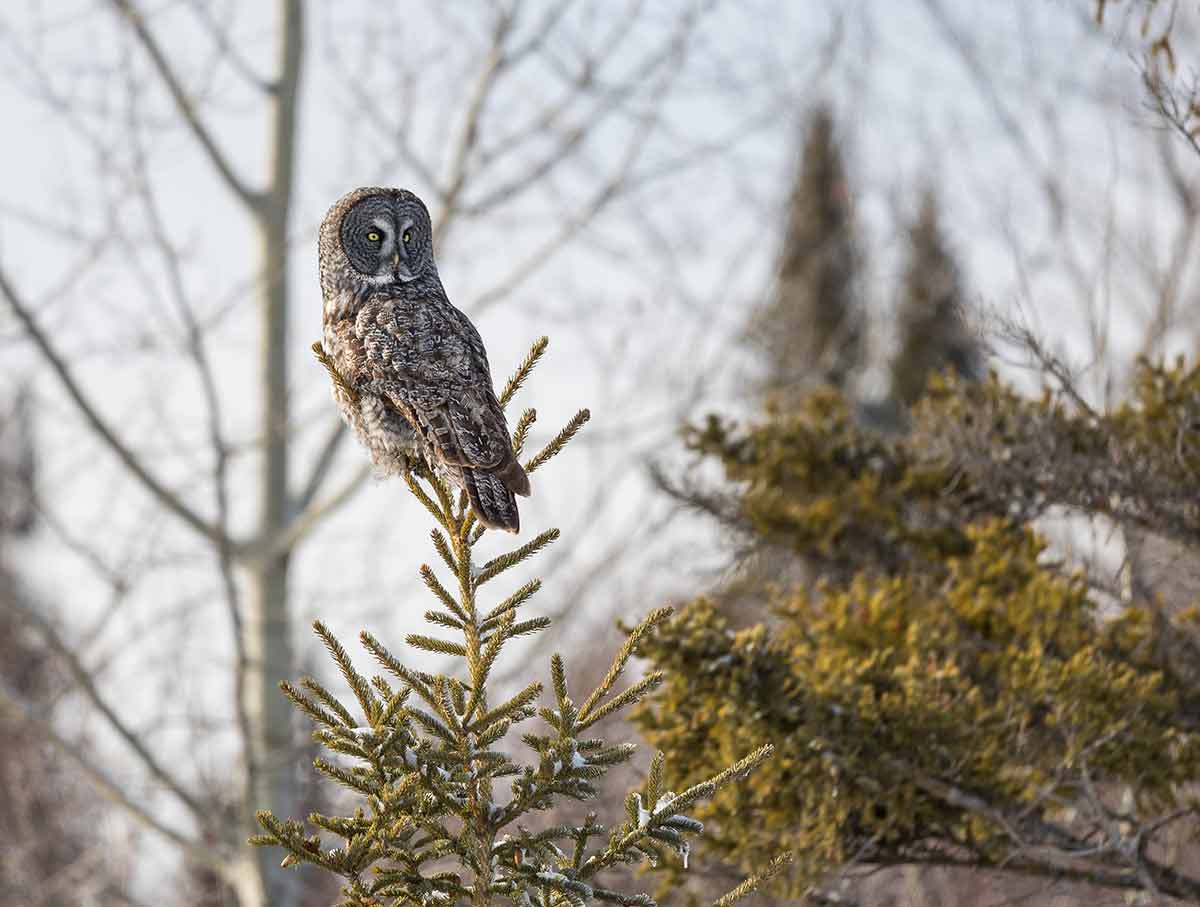
The Great Grey Owl is the provincial bird emblem of Manitoba and North America’s largest owl. The impressive owl has a wingspan of 1.3 m and lives in coniferous and mixed-wood forests in Riding Mountain National Park and the province’s southeast.
How to see Great Grey Owls
- Sandilands Provincial Forest – 80 km (60 miles) southeast of Winnipeg is a Great Gray Owl Ecologically Significant Area, where research studies are conducted to learn about the ecology, prey relationships and movements of Great Gray Owls.
6- Wolves
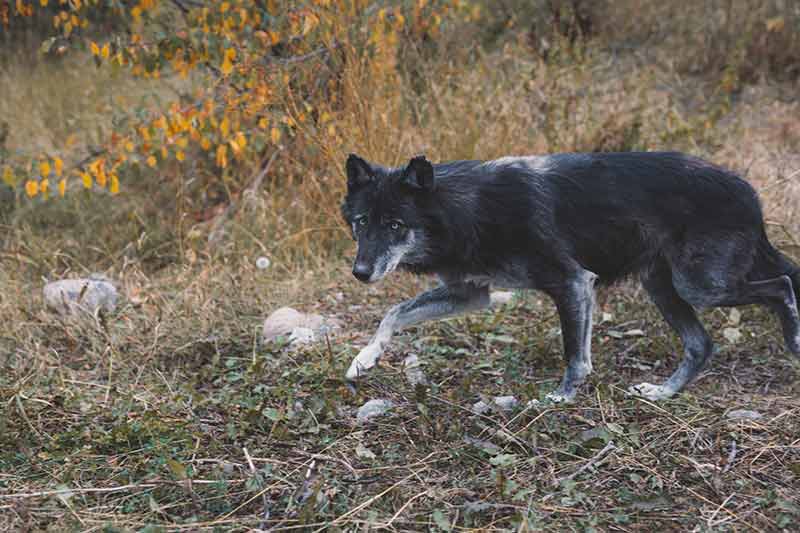
Wolves are an apex predator that has existed in Manitoba since before European settlement. According to the International Wolf Center, there are around 4,000 to 6,000 in Manitoba and the province’s wolf population is relatively stable.
When the Ice Age wiped out several species 11,000 years ago, the grey wolf was one of the larger predators that survived.
The city of Thompson hosted two International Wolf & Carnivore Conferences, and in 2017, the city was listed in the Guinness World Record for having the most number of people howling like a wolf when 2,033 people took part in the group howl.
How to see wolves
- Riding Mountain National Park has a resident population of around 70 wolves and they are a vital part of the park’s natural ecosystem. The visitor centre has guided experiences led by naturalists.
- Whiteshell Provincial Park also has a resident population of wolves and park interpreters can tell you more about where they hang out.
- Walk the Spirit Way Trail in Thompson and admire hand-painted wolf statues and the mural of Robert Bateman’s painting Wolf Sketch.
- Cloud Wolves of the Kaska Coast is a new tour based out of Nanuk Polar Bear Lodge, offering daily safaris to search for wolves as well as polar bears and moose. The Kaska Coast is a vast wilderness with resident packs of cloud wolves that are not fearful of humans.
7- Moose
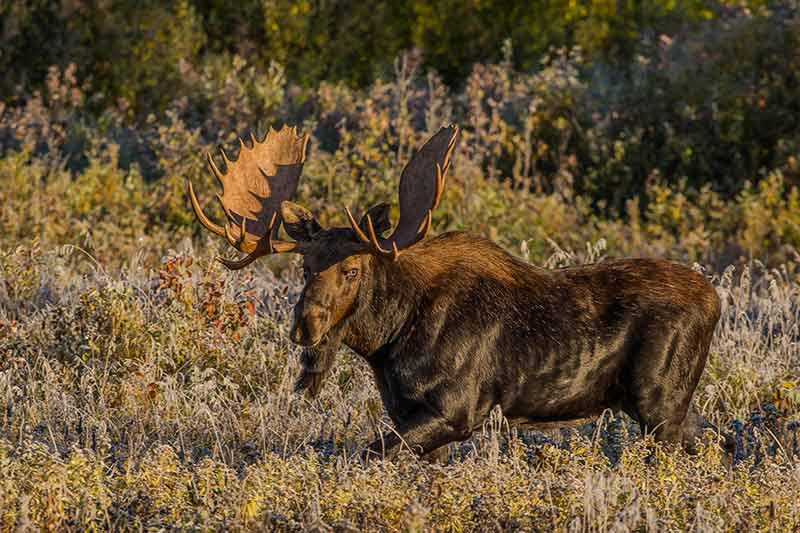
The largest member of the deer species, moose are huge animals that can grow as long as 1.8m. In addition, the males have impressively huge antlers.
Manitoba’s moose population is about 27,000 and the declining moose population has resulted in Moose Conservation Closures being established in southern Manitoba.
How to see moose
Moose are everywhere in Manitoba, from the US border in the south to the Nunavut border in the north.
- Riding Mountain National Park has around 3000 moose often seen around the Moon Lake area around highway 10 in winter and autumn.
- Spruce Woods Provincial Forest
- Turtle Mountain Provincial Park in southwestern Manitoba is also home to birds, white-tailed deer, beavers and raccoons, also seen along a self-guided wildlife trail.
8- Mosasaurs
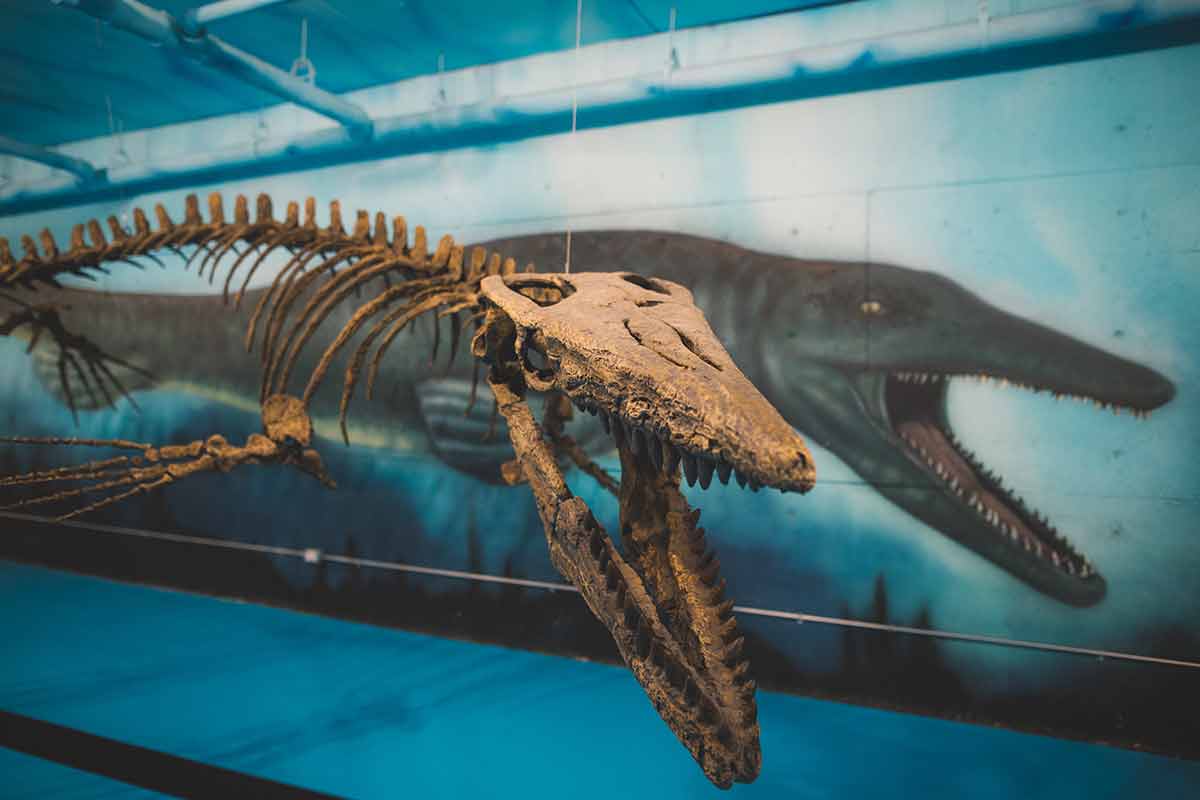
About 80 million years ago, North America was divided by an ocean where mosasaurs, extinct marine reptiles from the Late Cretaceous, once lived.
Mosasaurs were predators with four sets of teeth and would have been fearsome creatures to see in real life.
Archaeologists have found mosasaur skeletons on the prairies and the Canadian Fossil Discovery Centre in Manitoba is home to the largest mosasaur displayed anywhere in the world (according to the Guinness World Records).
How to see mosasaurs
Bruce the mosasaur is over 13 m long and is on display in the Canadian Fossil Discovery Centre at 126 km south of Winnipeg, at 111 Gilmour St B, Morden.
9- Caribou
Around 3000 woodland caribou roam the forests of Manitoba and there are two types: boreal and forest-tundra caribou. The boreal woodland caribou is listed as threatened under Manitoba’s Endangered Species Act.
Caribou are difficult to spot in Manitoba. One of Manitoba’s largest herds of caribou is in UNESCO World Heritage Pimachiowin Aki, a landscape with over 3200 lakes, 5000 freshwater marshes and 32,000 km of shoreline wetlands.
How to see caribou
- Pimachiowin Aki is in a remote part of Manitoba is a massive wilderness area for those who are keen on hardcore adventure travel. Options are limited to a fly-in fishing experience at a fishing lodge or a wilderness canoe adventure along the Bloodvein River, which requires orienteering and backcountry skills so it’s best to visit with a guide. This remote and pristine region offers chance encounters with woodland caribou, moose, wolves and black bears.
- Wapusk National Park south of Churchill is an area established to protect polar bear dens and essential for pregnant female polar bears. A helicopter tour from Churchill is the only way to spot wildlife as you fly over Wapusk National Park.
10- Canadian Beaver
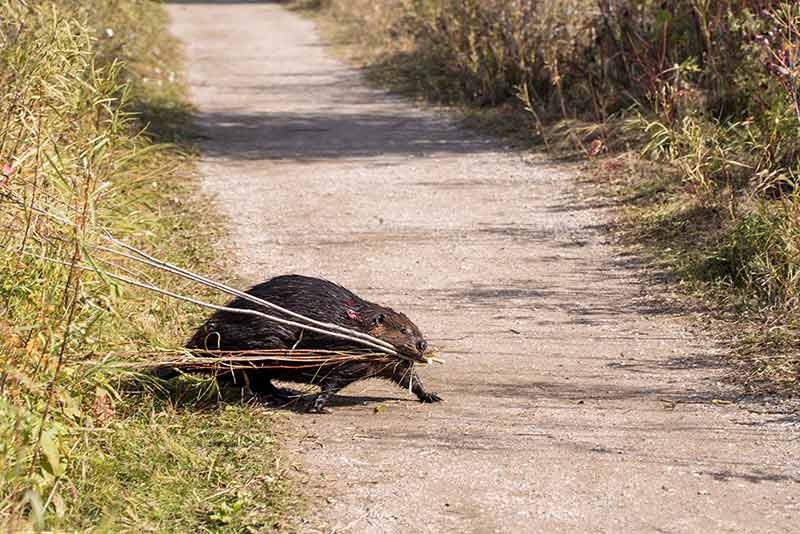
Beavers are native to Canada and have been considered Canada’s national icon for 300 years. The beaver was sought-after in the fur trade and has been an emblem on a coat of arms granted by Charles I in the 1620s to Sir William Alexander to symbolize his fiefdom in the New World.
Beavers were once endangered due to being hunted for their thick fur, but they made a comeback over the last century thanks to conservation efforts.
How to see beavers
Beavers are found in rivers, creeks and lakes throughout Manitoba. They can swim under the ice and hold their breath underwater for up to 15 minutes.
- Riding Mountain National Park – Beavers have an essential role in the park’s ecosystem by constructing dams, creating ponds and building wetlands.
- Look for beavers in any provincial park with a water source.
This post was published in partnership with Travel Manitoba. Travellers who are fully vaccinated against COVID-19 can enter Canada. For more information go here.
Plan Your Trip

Rent A Car – Find the best car rental rates at Discover Cars. They compare car hire companies to provide you with the best deal right now.

Find A Hotel – If you’re curious about this article and are looking for somewhere to stay, take a look at these amazing hotels.





